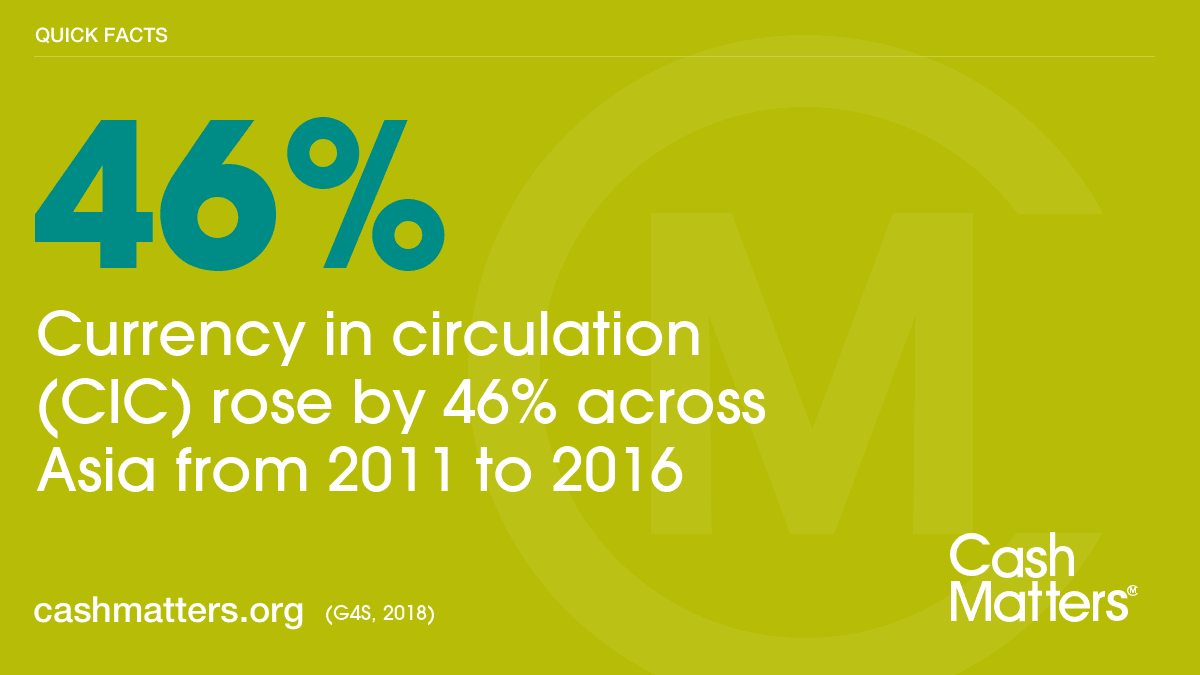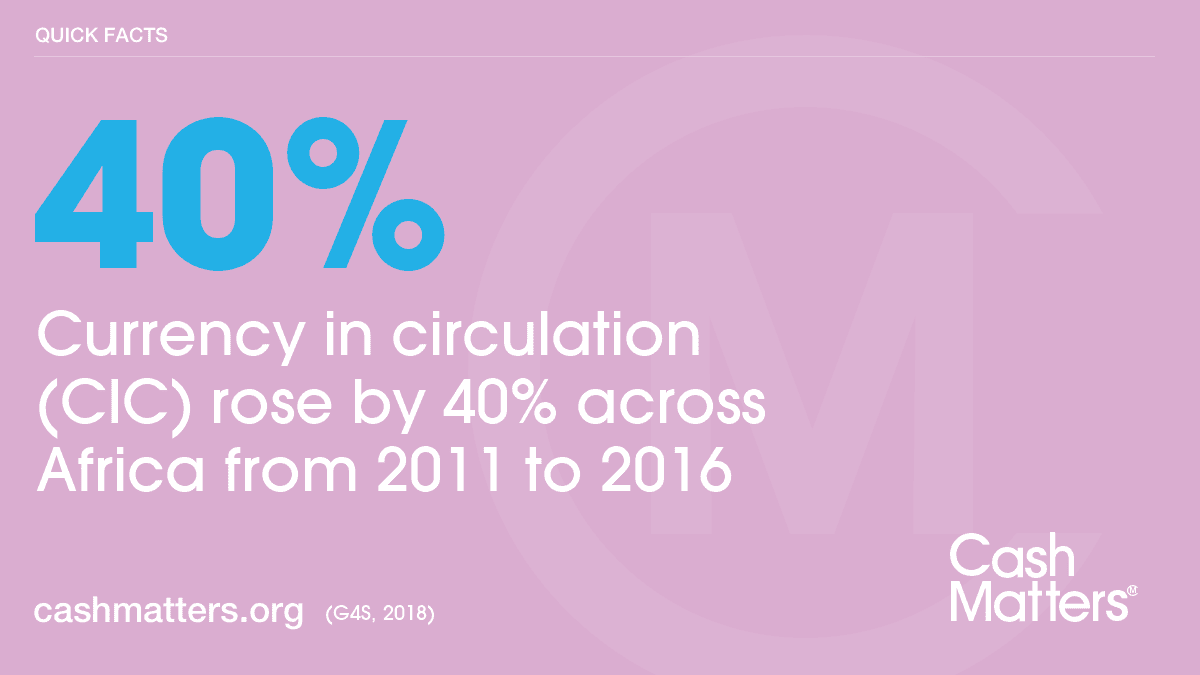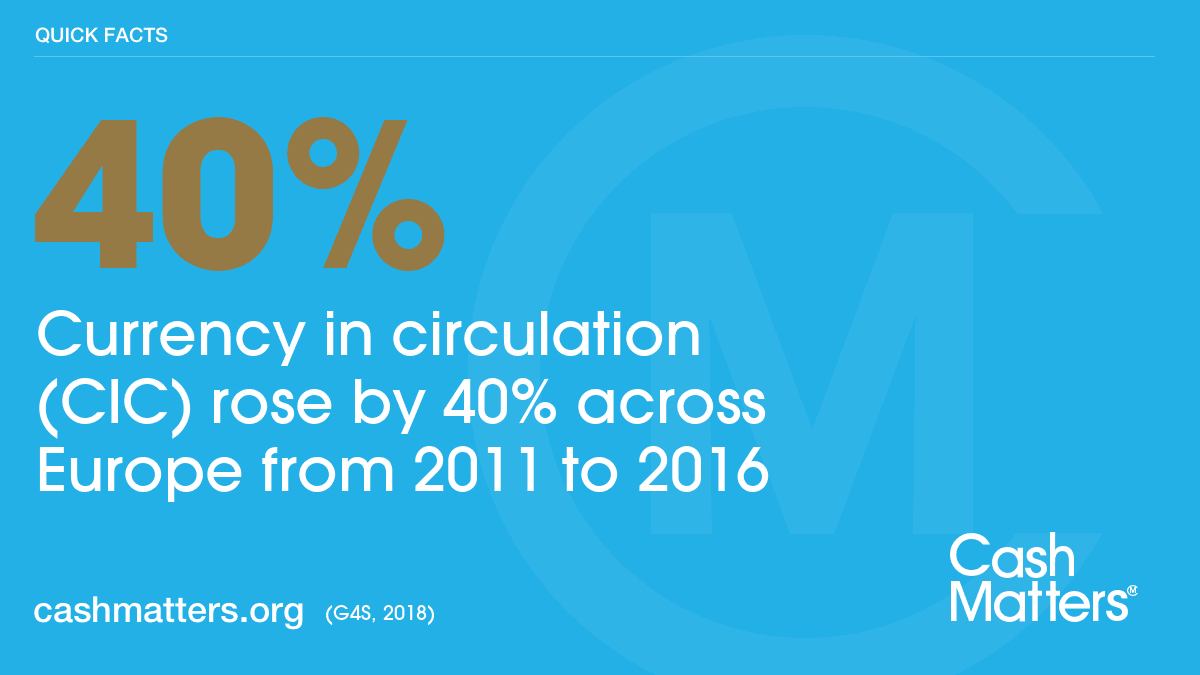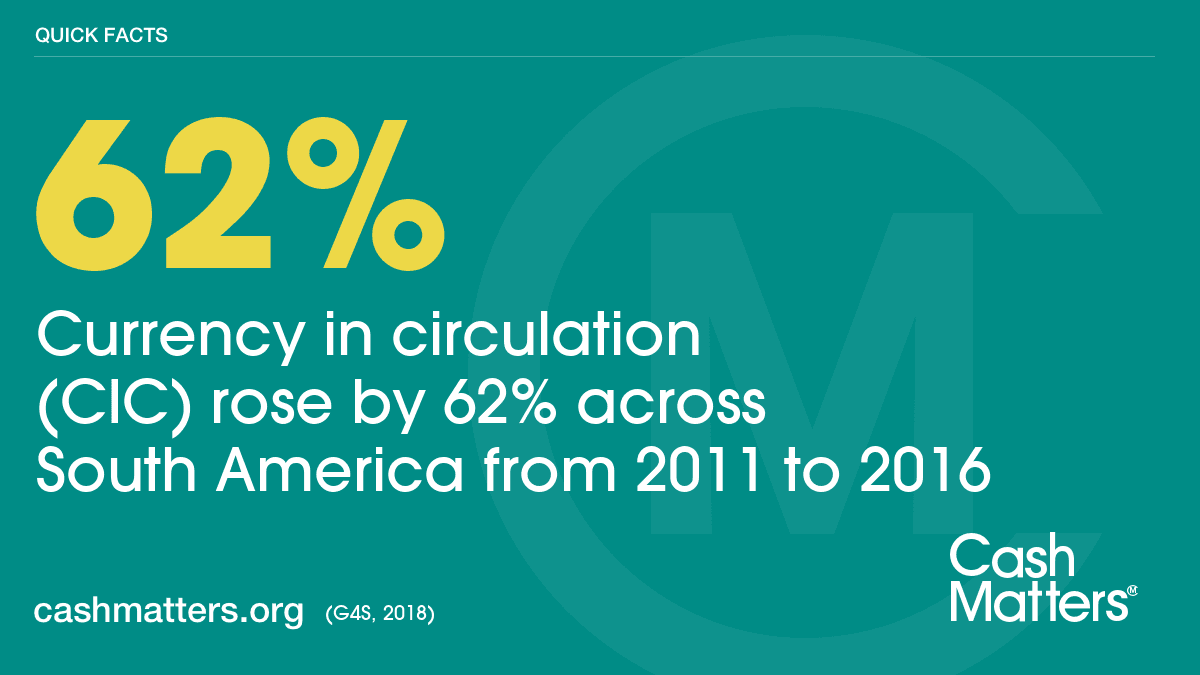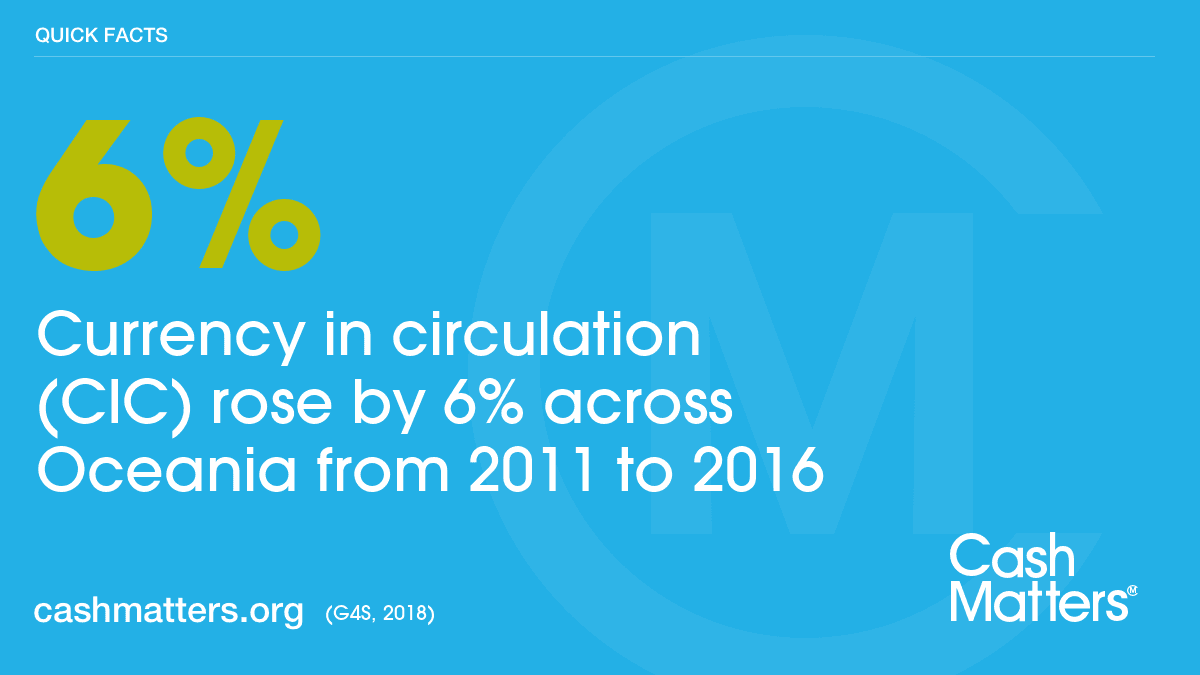
Cash remains hugely important all over the world, shows G4S report
According to the World Cash Report, first of its kind, "Cash is still by far the most widely used form of payment in all regions of the world and cash in circulation is growing." As it turns out, all this "cash is dead or dying" cashless overhype is misinformation. When it comes to the public's relationship with cash, both per continent and on a global level, it is clear that cash is not just important... it is increasingly important.
The findings are based on G4S surveys conducted over 47 countries, covering 75% of the global population an 90% of the world's GDP, tracking changes in payments behaviors across the world between 2011 and 2016.
Key figures include
- Globally, cash in circulation relative to GDP has increased to 9.6% across all continents, up from 8.1% in 2011. The value of ATM withdrawals experienced a positive (average weighted) growth rate of 4.6% in 2015 and cash is used in over 50% of transactions across 75% of all countries
- In North America, over 50% of transactions under $25 occurred with cash and over 60% of transactions under $10 occurred with cash
- In South America, cash in circulation has increased by 62% on average and only 45% of people have a bank account. Cash dependency relative to its GDP is 16%, the highest of all continents.
- In Europe, cash was used for 79% of all point of sale transactions and 60% of all point of sale transactions in 2016. Cash in circulation has risen by almost 40% on average across all countries.
“Cash remains fundamental in our day to day global economy. The evidence shows that contrary to popular opinion, demand for cash is growing in absolute terms and relative to GDP."
- In Asia, cash in circulation has risen almost 46% across all countries and over 75% of deliveries are paid for with cash.
- In Africa, the value of withdrawals and the number of ATMs are rising and cash in circulation has risen by almost 40% across all countries
- In the Middle East, cash on delivery is the most used payment method for e-commerce transactions
- In Oceania, cash in circulation has increased by 6% in Australia and 7% in New Zealand
“People trust cash; it’s free to use and readily available for consumers, it’s confidential, it can’t be hacked and it doesn’t run out of battery power– these unique qualities continue to hold significant value to people living on all continents."
The report draws attention to some of the unique attributes of cash which make it the world's favorite payment form:
- Cost-Efficiency
- Inclusion
- Trust
- Reliability
- Accessibility
- Confidentiality
Given the anonymity of cash transactions, it is very difficult to establish the exact volumes of transactions conducted in cash. In order to make a credible estimation of the status of cash throughout a geography, this report looks at two key indicators:
- The value of Currency in Circulation vs. GDP
- The value of ATM withdrawals
“Above all, the World Cash Report highlights that wherever people are in the world, they use and value a range of payment options. There is no region where everyone chooses the same way to pay and cash remains hugely important all over the world.
"The report highlights the variety of payment habits in different regions. In Europe, 80% of point-of-sale transactions are conducted in cash, while in North America, where card payments are most regularly used, cash use still accounts for 31%. In Asia, the rise of online purchases does not mean that cash is taken out of the equation, with more than 3 out of every 4 online purchases in a number of countries paid for by cash on delivery.
The attractiveness of cash and the reason consumers often select cash as their preferred method of payment (if they have a choice in payment method in the first place), could be because cash uniquely covers many of the features that consumers most value in a payment instrument, such as 100% availability and reliability, anonymity, and direct settlement without the need for a technical infrastructure."
